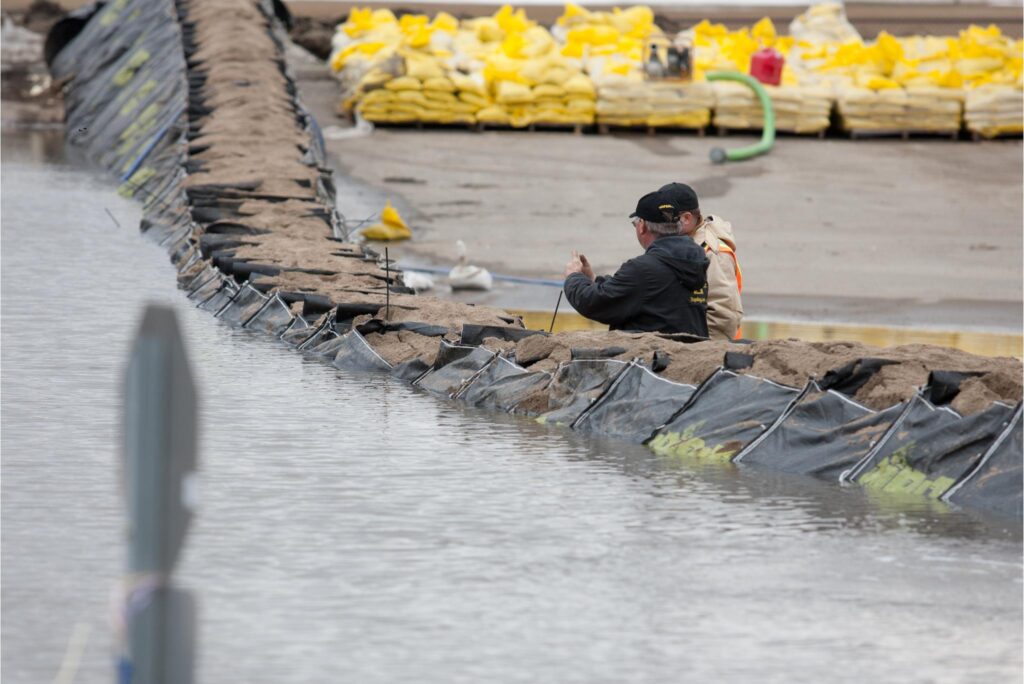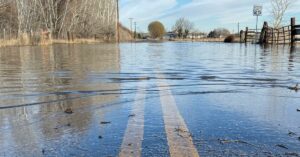Why Every River Community Needs a River Flood Barrier System
Every river community is at risk of flooding at some point. That’s why having river flood barriers ready to deploy is a critical part of flood protection.

Floods are a common occurrence in river towns, to the extent that most are prepared for them to happen at least once per year. As climate change pushes weather patterns to worse extremes, flooding is becoming more frequent—and more dangerous.
However, there are still measures that residents in river communities can take, including river flood barriers of multiple sizes and types.
River Floods Can Happen Anywhere
Since towns are often established near rivers, virtually every town is at risk of river flooding. It can happen almost anywhere in the United States and abroad, making river flood barriers and other protection plans essential for keeping communities safe.
These are just a few examples of towns you wouldn’t expect to be prone to flooding that have implemented river flood barriers and other protective measures.
Galena, Illinois
Galena, Ill., is a small, picturesque tourist town that historically has had an enormous flooding problem. While the Galena River that bisects the town is a fraction of the size of the neighboring Mississippi River, floods have plagued the city dozens of times since the town was founded in 1826, causing millions of dollars in damage over the years. Incidents in Galena include major floods that warranted federal disaster area declarations.
Fortunately, to protect the historic charm that makes this city a small-town attraction in Illinois, local lawmakers erected floodgates and a robust levee system to protect the downtown areas most vulnerable to flooding. This keeps the city’s economy afloat even when the river breaches the levee. However, homes and businesses outside the floodgates are still at risk of flood damage every few years.
Big Thompson Canyon, Colorado
Stretching over 70 miles between the towns of Estes Park and Loveland, Big Thompson Canyon and the Big Thompson River carve a path through Colorado’s Front Range. However, for all the natural splendor this river provides, it has also become dangerous on multiple occasions.
In two separate incidents in 1976 and 2013, torrential rain battered the canyon, leading to flash floods that were difficult to escape for those on the canyon floor. The 1976 flood claimed 144 lives, while the 2013 flood caused 8 deaths and damaged almost 20,000 homes.
In the years since, more property owners along U.S. Route 34 have put flood protection measures in place, while others still have watermarks and other signs showing how high the floodwaters were. These markers serve as a cautionary reminder of the sheer power of the river and the damage it can cause to homes without flood protection.
Clifton, Arizona
Locals in this high desert town jokingly refer to the metal floodgates at the end of town as the “Jurassic Park” gates due to their resemblance to the dinosaur enclosure in the movie of the same name. However, these gates serve a very important purpose: They’re part of the city’s flood protection system.
The San Francisco River has flooded the town multiple times since it was officially incorporated in the 1800s, costing many civilians their lives and destroying homes and businesses. These flash floods usually come with little warning, making them even more devastating.
While flooding is uncommon in this area, the city’s levee system and metal floodgates give the downtown area better protection from flooding.
New York City
Even though it’s the largest city in America and has been around for hundreds of years, most of New York City’s five boroughs are at risk of coastal and river flooding. The city is vulnerable to flash floods and other potentially deadly events during periods of severe weather, especially within a few blocks of the East and Hudson Rivers.
While the city does have a robust emergency management system, residents will continue to deal with flood-related challenges as the climate changes and the city’s infrastructure ages.
River Flood Prevention Is More Affordable than Cleanup
Even the most robust flood protection system costs less than the hundreds of thousands or millions of dollars needed to clean up after a river flood.
This is where having even a simple residential flood barrier in place can prevent catastrophic amounts of damage while allowing local businesses to reopen sooner after the floodwaters have receded.
According to the National Centers for Environmental Information (NCEI), major floods cost an average of $4.7 billion per event. That includes everything from damaged homes and businesses to local economic, transportation, and energy disruptions that make it even harder for local areas to recover.
By contrast to the millions of dollars caused in damage, a flood protection barrier like TrapBag® costs a fraction of the price.
Flood Protection Barriers with TrapBag
TrapBag is a flood protection system that makes an ideal river flood barrier for homes and neighborhoods. Originally designed as a quick, easy alternative to traditional sandbags, these home flood barriers are designed to create watertight protection during even the most catastrophic floods.
How Does a Flood Barrier Work?
Flood barriers like TrapBag are designed to keep water trapped on one side, protecting the people, homes, and businesses on the other side with high-strength textile that withstands weight and pressure from water without giving way. The pentagon-shaped bags are sloped on one side, vertical on the other, and have an open top, so they can be filled with sand, concrete, or washed gravel.
Whereas traditional sandbag walls require thousands of sandbags to create a 100-foot barrier, TrapBag requires only two 50-foot units and 40% less fill material to achieve even better results.
This makes them ideal for keeping out water during a river flood, which is strong and fast enough to sweep away cars and cause buildings to collapse.
How to Make a Flood Barrier with TrapBag
With the right equipment, a single person can set up TrapBag river flood barriers by themselves in a matter of minutes with a few simple steps:
1. Open the Barrier Packaging
TrapBag home flood barriers are delivered folded up like an accordion. Take the barrier out of its packaging and stretch it out to the desired shape and length you need, up to 50 feet.
2. Fill the Flood Barrier Cells
While someone could fill their flood barrier using shovels and buckets as they would with traditional sandbags, it’s also possible to fill TrapBag even faster using a skid steer or other equipment by dumping the fill material into the top.
3. Place the Barrier Where Needed
When filled, TrapBags can act as freestanding barriers, set against existing levees or retaining walls, or act as a temporary levee system to keep floodwaters from reaching certain areas. TrapBag is stackable, meaning even severe flooding can be kept at bay.
Order Your TrapBag River Flood Barriers Now
Flooding is expensive, devastating, and deadly for thousands of river communities across the United States and the world. However, TrapBag can protect these communities from the worst of the flood damage, making it easier to get back to business as usual after the flood subsides.
The TrapBag team is available 24/7 for rapid response and deployment needs. Call us at (239) 674-6611, or connect with us online today.
Meet the author
Get the Dirt Before the Flood Hits
Stay ahead of flooding, erosion, and disaster response challenges. The Dirt, TrapBag’s monthly newsletter, delivers field-tested tips, real-world case studies, and the latest in barrier technology straight to your inbox.

